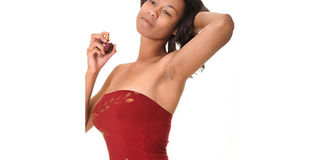The overlooked world of fragrance influencers

Fragrance is said to be the gateway into designer brands along with accessories and increasingly, cosmetics and skin care. PHOTO| FILE| NATION MEDIA GROUP
What you need to know:
- Fragrance, however, is a complex yet intriguing part of fashion. On the one hand, fragrance performance is at the bottom of the rung.
- The use of social media to sell scents is rather difficult because it does not translate as expected.
- We just don't buy perfume frequently enough for it to be a conversation as is the case with hair, clothes, makeup, skincare and nails.
Have you ever bought a perfume online? I would be very curious to know what made you do it. For the longest time, new scents were fragrant stickers glued to magazine pages for readers to fall in love and bond with, then rush to the store and heft a bottle.
Fragrance is said to be the gateway into designer brands along with accessories and increasingly, cosmetics and skin care.
They are also subject to knock offs. It explains why Madora has perfume launches for the newest scents in town, from Dior’s Poison Girl to Mon Guerlain, and why Lintons hosted Miss Dior’s eau de parfum launch and allowed a glimpse into Lancome’s La Nuit Tresor.
Neither brand heads off at the pass with local lifestyle influencers. Their stock of authentic perfumes average between Sh10,000 to Sh15,000 a bottle.
LUXURY FRANGRANCES
Luxury fragrances, those that are niche and more likely to be bought by those in the know, are far more costly such as Amouage, a 12 set bottle collection for those who want to step out of the ordinary realm and Roja Parfums. Alongside collections such as Jo Malone and Tom Ford to blend and titrate as your nose pleases.
Fragrance, however, is a complex yet intriguing part of fashion. On the one hand, fragrance performance is at the bottom of the rung. The use of social media to sell scents is rather difficult because it does not translate as expected. We just don't buy perfume frequently enough for it to be a conversation as is the case with hair, clothes, makeup, skincare and nails.
Then again, how do you sell perfume online when someone cannot interact with a scent? Enter perfumistas, a collection of niche influencers with an intimate, skilled knowledge of scents. They tend to be micro influencers with followers ranging from 1,000 to less than 100,000.
They are the opposite of what perfumes have done for generations, traditional marketing. This has involved big budget mini films with well-paid celebrities fronting the brand.
These abstract short films do not entice as many consumers as brands hope they would. It is why Viktor & Rolf launched #Flowerbomb, opting out of shipping bottles for digital reviews and instead invited influencers who they said “match and embody our brand” and collaborated with them, building a set for them to shoot for their individual social media platforms.
NOT MAINSTREAM
Except now influencers go beyond simply loving fragrances into the world of partnerships where they work with perfume houses to build their own scents from scratch. Exactly like celebrities do, only these products are not mainstream.
The most referenced example of a fragrance influencer has to be Jeremy Fragrance, a YouTuber who comes up in over 40 per cent of searches, in sharp contrast to perfumeries that garner a measly 4 per cent in 2017. Jeremy has two channels, English and German, and is he finally crafting his own line of scents.
To say expectations are high would be an understatement. There are underground influencers known as fragrance disruptors who play chemists based on their appreciation for scents be it niche, such as vintage only fragrances or people who have tinkled with homemade aftershave and gifted friends, trained perfumers who now work for small houses, couples who meet, fall in love and marry over scent and keep on with their work.
If you know where to look, the internet has lists upon lists of the best perfume blogs of 2018, the now defunct Klear’s list of the top 10 influencers to influence measuring blogs.
How are the big perfume houses handling this? They are still figuring it out. Marc Jacobs had a brilliant social media campaign. If you have always wondered what a tweet or post was worth, for Marc Jacobs, it was worth a bottle of Daisy during New York Fashion Week in 2017.
His brand not only generated buzz, it showed there is actual social media currency.
Facebook and Instagram have over the last couple of years grown fragrance by over 200 per cent. It explains the exclusively digital launch of Sauvage cologne.
On the 12th of June 2018, France held its annual Fragrance Foundation Awards. Joining the Fragrance Foundation, established in 1949, is invite only. Exactly like the do with haute couture fashion. One of their sponsors was Hearst Magazines, a multimedia platform and rival to Conde Nast.
Awards are given for packaging (an aspect that sells perfumes on Instagram), print advertisements and commercial scents, all with both male and female categories. One last thing. Colognes have a bigger base digitally meaning there are more reviews, insights and cologne appreciation than there seem to be women’s. And men’s take on perfume is far more unisex. They will deconstruct both. There’s a story in there.





